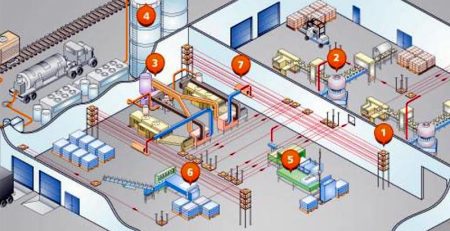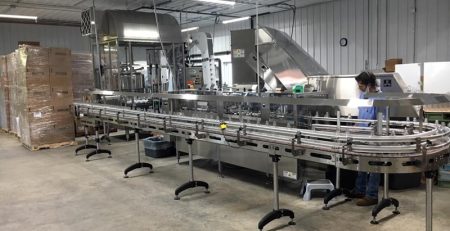Bottle bagging machines play a crucial role in the modern packaging and distribution sector, providing efficient solutions for handling, packaging, and transporting bottles of various sizes and materials. As consumer demand for beverages and other liquid products continues to rise, industries seek more advanced and efficient methods to package and distribute their products safely. Bottle bagging machines are at the forefront of this effort, integrating to ensure that bottles are not only securely packaged but also maintain their integrity throughout the supply chain.
The Importance of Bottle Bagging Machines in Container Handling
Container handling involves several critical steps, from filling and sealing to labeling, packaging, and palletizing. Each step is essential to ensure the product reaches the consumer in perfect condition. Bottle bagging machines specifically address the packaging and handling part of this process, where bottles need to be grouped, bagged, and prepared for shipment or storage. Their role is pivotal for several reasons:
- Protection: Bottles, whether made of glass, plastic, or other materials, are prone to damage during transportation and storage. Bottle bagging machines use various materials, such as shrink wrap, bubble wrap, or other protective films, to safeguard bottles against impact, vibration, and environmental factors.
- Efficiency: These machines automate the process of collecting and bagging bottles, significantly increasing the speed of packaging and reducing labor costs. Automation also minimizes human error, ensuring a consistent packaging quality that is crucial for brand reputation.
- Versatility: Modern bottle bagging machines are designed to handle a wide range of bottle sizes and shapes, making them suitable for various industries, from beverage and pharmaceutical to cosmetics and chemical manufacturers. This versatility allows companies to use the same equipment for different products, maximizing their investment.
- Sustainability: With a growing focus on environmental sustainability, many bottle bagging machines now offer options to use recyclable or biodegradable materials for packaging. This shift not only helps companies reduce their environmental footprint but also meets the increasing consumer demand for eco-friendly packaging.
How Bottle Bagging Machines Work
The operation of a bottle bagging machine typically involves several stages, each designed to efficiently handle the bottles without causing damage:
- Feeding: Bottles are fed into the machine using a conveyor system. This can be manually loaded or integrated with upstream equipment like fillers and labelers for a fully automated line.
- Grouping: Depending on the desired pack configuration, bottles are accurately grouped together using pneumatic or mechanical systems.
- Bagging: Once grouped, a bag is either automatically drawn from a pre-made bag supply or created on-the-spot from a roll of film. The bottles are then carefully inserted into the bag.
- Sealing and Cutting: The open end of the bag is sealed, usually through heat sealing, to protect the bottles during transport and storage. The machine then cuts the bag to size if it was formed from a continuous roll.
- Discharge: The bagged bottles are then discharged from the machine onto a conveyor, ready for palletizing or direct shipment.
“Bottle bagging machines specifically address the packaging and handling part of this process, where bottles need to be grouped, bagged, and prepared for shipment or storage.”
Technological Advancements in Bottle Bagging
The evolution of bottle bagging machines has been marked by significant technological advancements aimed at increasing efficiency, reducing waste, and improving the adaptability of these machines to different packaging needs. Some notable innovations include:
- Integrated Vision Systems: Advanced cameras and sensors are used to inspect bottles before packaging, ensuring only those meeting quality standards are bagged. This reduces waste and prevents the distribution of defective products.
- Adjustable Mechanisms: Many modern machines feature easily adjustable components, allowing quick changes between different bottle sizes and shapes without significant downtime.
- Smart Control Systems: Programmable Logic Controllers (PLC) and touch screen interfaces enable precise control over the bagging process, including adjustments for speed, bag size, and sealing parameters. These systems can also diagnose issues and streamline maintenance procedures.
- Sustainability Features: Innovations in material science have led to the development of more sustainable bagging options, including biodegradable and recycled materials. Machines are also becoming more energy-efficient, further reducing the environmental impact of bottle packaging operations.
Challenges and Considerations
Despite their benefits, implementing bottle bagging machines comes with its own set of challenges. The initial investment can be significant, especially for small to medium-sized enterprises. Additionally, choosing the right machine for specific container types and sizes is crucial, as is ensuring compatibility with existing production lines. Maintenance and technical support are also important factors, as downtime can significantly impact production schedules and efficiency.
Auto Bagger Systems from Automation Ideas
Bottle bagging machines are indispensable in the container handling process, offering a blend of protection, efficiency, and versatility that is hard to achieve through manual methods. As industries continue to evolve, the demand for more advanced, sustainable, and flexible packaging solutions will drive further innovations in this field. For businesses looking to stay competitive and meet the growing demands of consumers, investing in the right bottle bagging technology is not just an option—it’s a necessity.
If you are interested in our auto bagger systems, or would like to learn more about any of our other automation equipment, please contact us here or give our dedicated support team a call at (616) 874-4041.











